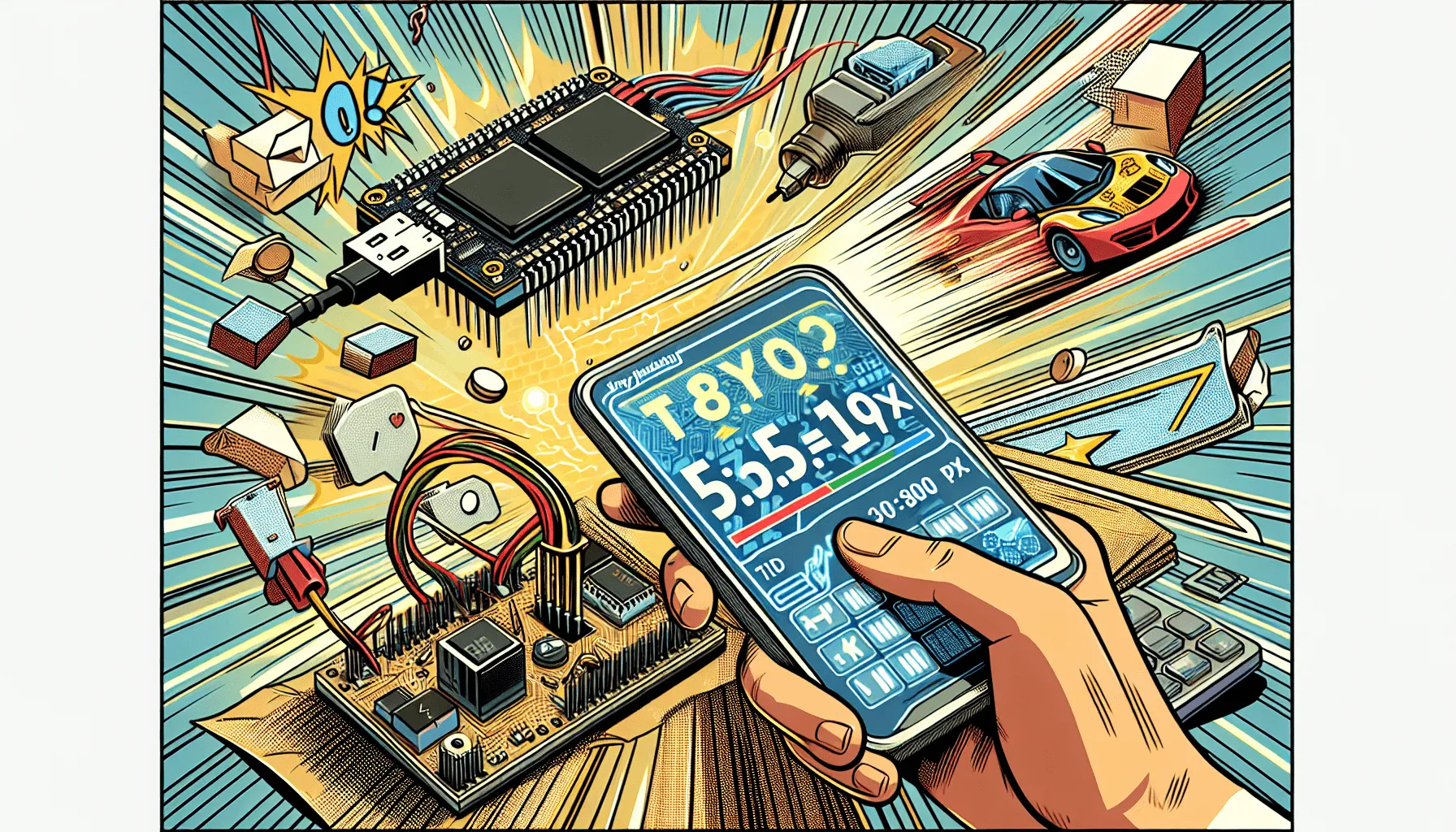💡 The Hidden Power of TinyGo: Run Go on Microcontrollers Faster Than C? Here's the Shocking Truth!
💡 The Hidden Power of TinyGo: Run Go on Microcontrollers Faster Than C? Here's the Shocking Truth!

💡 The Hidden Power of TinyGo: Run Go on Microcontrollers Faster Than C? Here's the Shocking Truth!
In the world of embedded systems, two things always reign supreme: performance and memory efficiency. The common perception has always been to write low-level embedded code in C or even Assembly. But what if I told you that you could write embedded software in Go and compile it down to a tiny, lightning-fast binary that runs on microcontrollers with less than 256KB of Flash and 64KB of RAM?
Welcome to TinyGo.
TinyGo is a compiler for the Go programming language, designed to target resource-constrained systems like microcontrollers, WebAssembly (WASM), and even command-line tools with an absolutely minimal footprint. Sounds crazy? In this deep-dive post, we’re going to:
- Demystify TinyGo and how it compares to regular Go and C
- Explore real-world hardware examples
- Understand memory, performance considerations, and limitations
- Build and flash a real microcontroller LED blink example in TinyGo
Let’s dive in! 🚀
🧬 What Is TinyGo?
TinyGo is built on top of LLVM and provides a Go frontend that supports a subset of the Go standard library. It compiles Go code into drastically smaller binaries suitable for microcontrollers and WebAssembly platforms.
TinyGo is meant for:
- Embedded systems (Arduino, STM32, micro:bit, NRF52)
- WebAssembly applications
- Building CLI tools with small executable size
➕ Bonus: TinyGo produces WASM binaries as small as 100KB, making Go a frighteningly compelling case for frontend performance optimization.
⚔️ TinyGo vs C: The Showdown
| Metric | C | Regular Go | TinyGo |
|---|---|---|---|
| Compilation Speed | Fast | Fast | Moderate |
| Binary Size (Hello) | ~1 KB | ~2.1 MB | ~12 KB |
| MCU Support | Native | ❌ | ✅ |
| Garbage Collection | No | Yes | Optional/Manual |
| Toolchain Ecosystem | Mature | Mature | Growing |
The binary size alone is enough reason to consider TinyGo when you want a high-level language but low-level hardware support.
🔌 Hello World on a Microcontroller (Blink an LED!)
Let’s write our first TinyGo program that blinks an LED on an Arduino board (e.g., Arduino Uno).
🧰 Prerequisites
- Install TinyGo
- Arduino UNO or compatible board
- USB cable
# Install TinyGo brew tap tinygo-org/tools brew install tinygo # Confirm installation tinygo version
🔧 Code: Blink.go
package main
import (
"machine"
"time"
)
func main() {
led := machine.LED
led.Configure(machine.PinConfig{Mode: machine.PinOutput})
for {
led.High() // Turn LED on
time.Sleep(time.Second)
led.Low() // Turn LED off
time.Sleep(time.Second)
}
}
🚀 Flash to Hardware
tinygo flash -target=arduino examples/blink.go
Congratulations! You just wrote and flashed a Go program to a microcontroller! 💥
🍬 Bonus: TinyGo + WebAssembly for Ultra-Light Frontend Bundles
TinyGo is not just for microcontrollers. Here’s what a simple DOM manipulation app in TinyGo looks like.
index.html
<!DOCTYPE html>
<html>
<body>
<button id="btn">Click me</button>
<script src="wasm_exec.js"></script>
<script>
const go = new Go();
WebAssembly.instantiateStreaming(fetch("main.wasm"), go.importObject).then(result => {
go.run(result.instance);
});
</script>
</body>
</html>
main.go
package main
import (
"syscall/js"
)
func main() {
document := js.Global().Get("document")
btn := document.Call("getElementById", "btn")
btn.Call("addEventListener", "click", js.FuncOf(func(this js.Value, p []js.Value) interface{} {
js.Global().Call("alert", "Hello from TinyGo!")
return nil
}))
done := make(chan struct{}, 0)
<-done // Prevent exiting
}
Compile to WASM
tinygo build -o main.wasm -target wasm ./main.go
🎉 Now you have a lightweight frontend app written in TinyGo that can be run inside the browser!
📊 Common Pitfalls When Using TinyGo
- Missing Standard Library Support: TinyGo doesn’t support all of Go’s standard library. Be mindful.
- Limited Reflection: No fancy JSON marshaling with struct tags—use minimal dependencies.
- Garbage Collection Limitations: GC is limited and can lead to subtle issues on devices with limited RAM.
- Peripheral Support Limitations: Not all microcontroller peripherals are fully supported. Check your chipset compatibility on the TinyGo Targets page.
🧠 Final Thoughts: Why It Matters
TinyGo gives you a superpower: write high-level, garbage-collected, readable code that runs unbelievably well on constrained devices.
What used to take hundreds of lines and hours in C can be built in a few minutes using TinyGo. Better yet, you can share business logic across microcontrollers and WebAssembly targets in a single codebase written in Go.
In a world where IoT is growing and frontend performance matters more than ever, TinyGo is a powerful tool you probably haven’t tried—but absolutely should.
🔗 Resources
- https://tinygo.org
- https://github.com/tinygo-org/tinygo
- https://forum.tinygo.org
✅ TLDR
- TinyGo is a Go compiler optimized for microcontrollers and WASM
- It generates binaries significantly smaller than standard Go
- Ideal for ☁ IoT, 🧠 Edge AI, and 💻 WebAssembly
- Try writing a LED blinker or browser app today—Go has never been so small
🚀 In a world of bloated runtimes, TinyGo gives you minimalism with power.
💼 If you're looking to explore or build innovative hardware or browser-based projects using TinyGo, we offer tailored Research and Development services to bring your ideas to life!